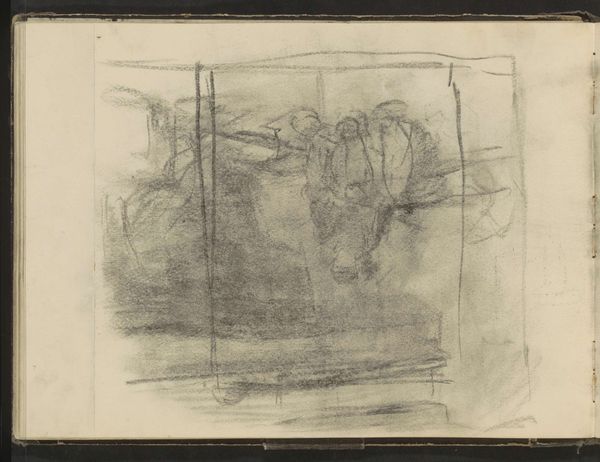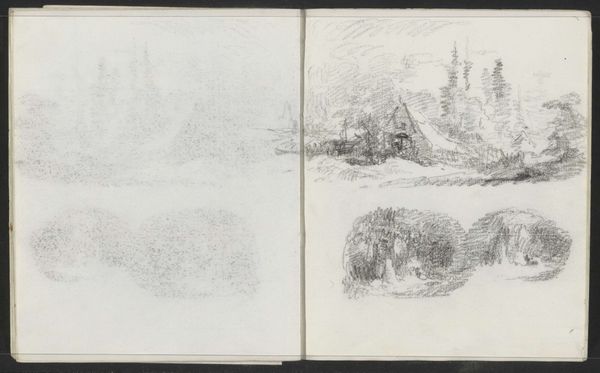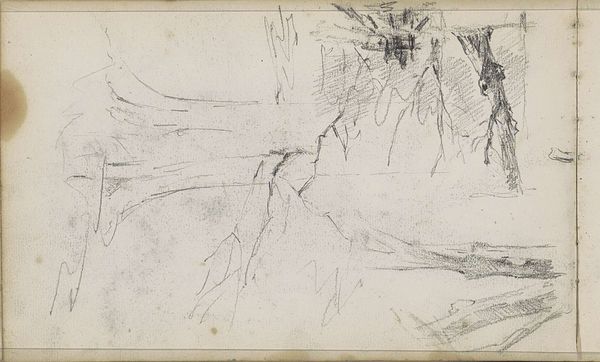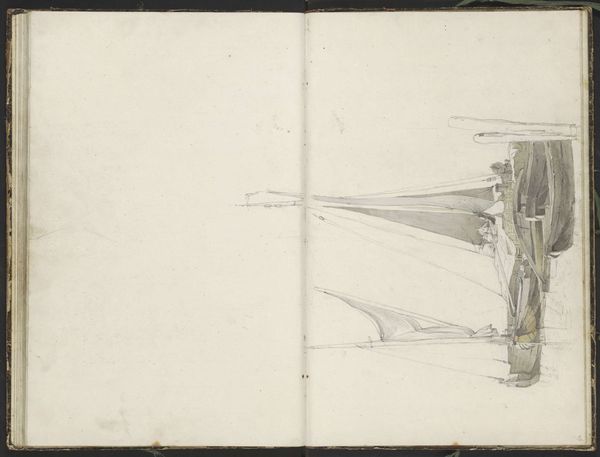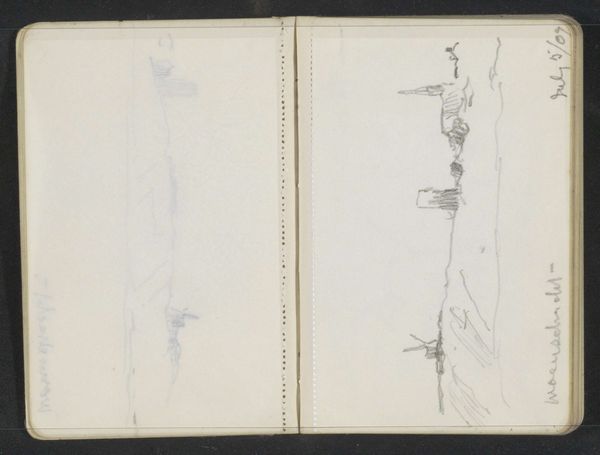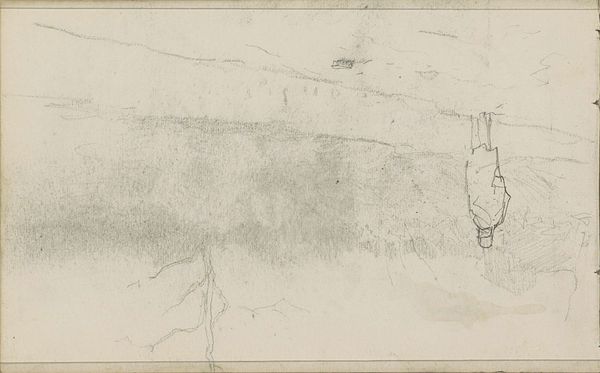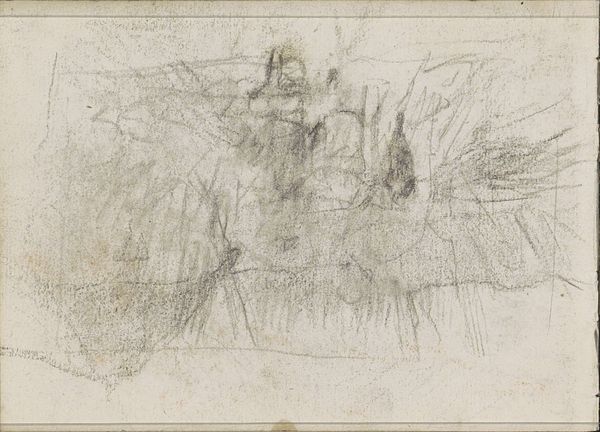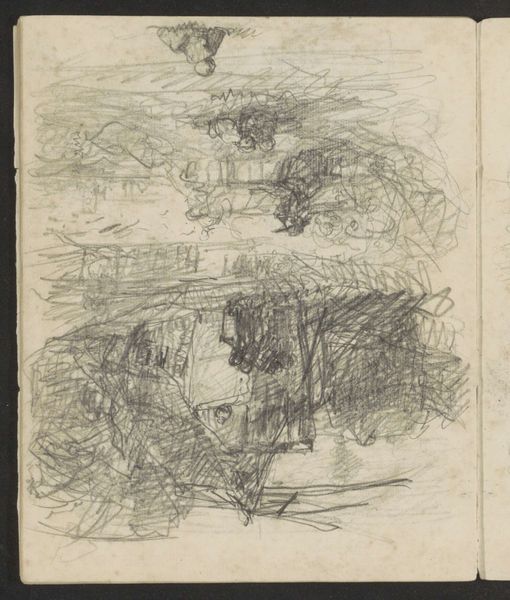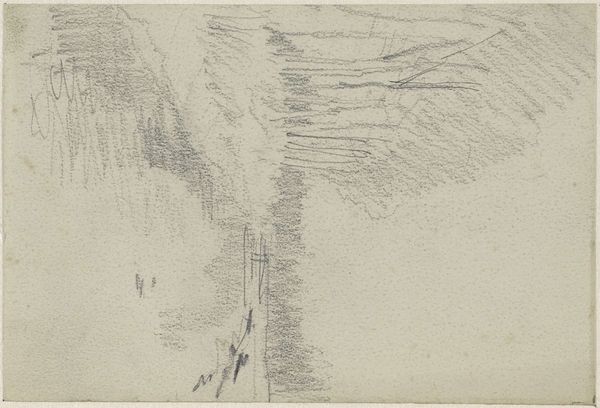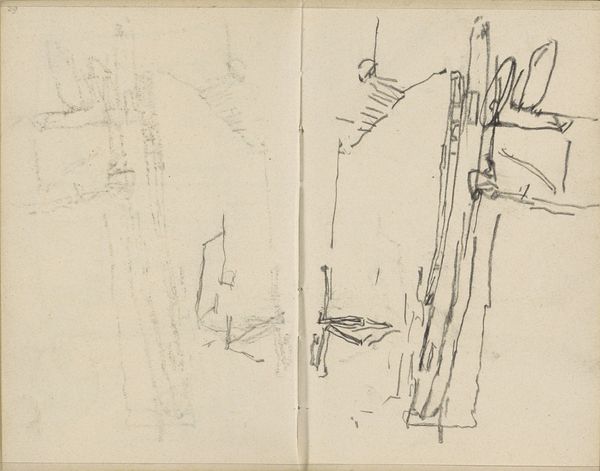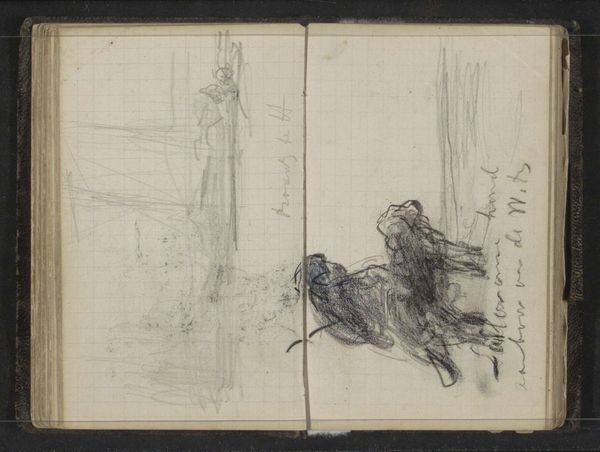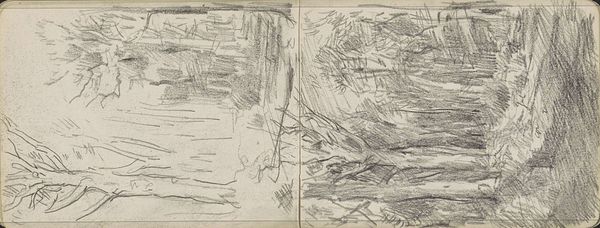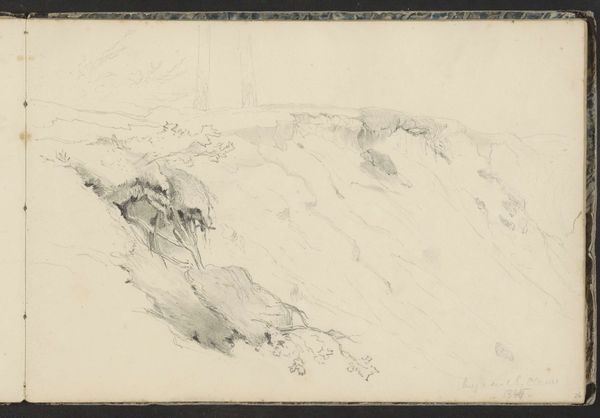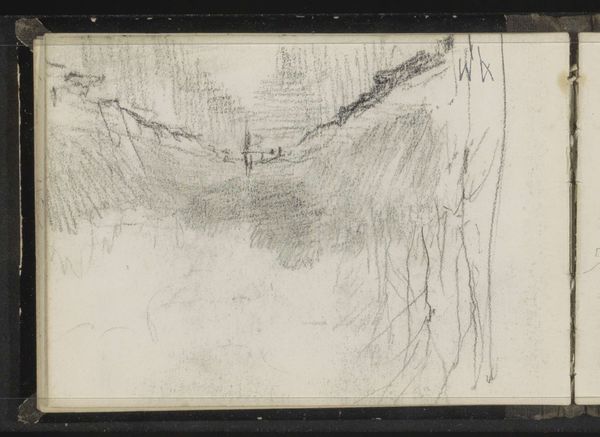
drawing, pencil
#
drawing
#
impressionism
#
landscape
#
pencil
Copyright: Rijks Museum: Open Domain
Curator: Immediately, the texture leaps out – a layering of rapid pencil strokes evoking a somber stillness. Editor: I agree, it is a compelling, almost claustrophobic scene, isn't it? This pencil drawing is entitled "Landschap met bomen aan een waterkant", or "Landscape with trees on a waterfront" in English. It dates from 1888-1889, and was made by Maria Vos. You can find this work in the Rijksmuseum. Curator: It's almost aggressively private, wouldn’t you say? This dense thicket seems to refuse entry. The heavy use of shadow evokes anxiety around that which can’t be known or accessed. Do you see that in relation to Vos’s other landscapes? Editor: Absolutely. Vos often portrayed the Dutch landscape with meticulous detail. However, she worked at a time when there was a huge increase in interest surrounding Impressionism, of which some principles seem to emerge in the rapid lines and unfinished, sketch-like quality to certain parts of this composition. Her training in the Hague School no doubt instilled in her the importance of realistically portraying nature. And her ability to adopt certain impressionist principles demonstrates a keen awareness of artistic trends. Curator: The near monochromatic rendering also speaks to a broader critique within art historical circles, then and now, around color as spectacle, color as shallow pleasure. We see here a more serious mode of observing, of feeling a space, right? Editor: Exactly. It highlights a move toward a more abstracted understanding of the world and of Dutch culture in this period. Looking at this sketch in comparison to Vos' larger body of work allows one to trace the shifts occurring within academic artistic circles, as artists engaged with a broader European culture and experimented with it here in the Netherlands. It can act almost as a case study in artistic dialogue. Curator: This reading has really enriched my understanding. The piece becomes more than just trees, water and bank. It’s an engagement with art historical and societal shifts, and what it meant to occupy a specific cultural space in that moment. Editor: Indeed, hopefully listeners have come to appreciate how history helps inform our emotional, affective responses. Thanks for the chat!
Comments
No comments
Be the first to comment and join the conversation on the ultimate creative platform.
